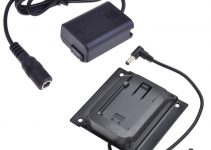When creating transitions, it’s often too easy to get carried away with fancy and expensive third-party packs. Rather than investing hundreds of dollars in digital presets, you may want to consider performing in-camera transitions instead. Not only does using this technique saves money, but it also gives an interesting flow to your edit using camera movement as a means to transition from one clip to the next.
So, if you’re in need of inspiration for some in-camera transitions, look no further as Benn Jayms Tkalcevic goes over three seamless effects you can do with your camera and a few simple cuts in post.
The first trick featured in the video shows a subject walking past the camera, then in the second shot, we see the talent in a completely different location. As visually complex the shot may seem, it’s actually pretty easy to replicate.
First, have your actor walk towards the camera. With your camera on a gimbal, rotate around to the back of your subject as he or she walks closer to the camera. In your second location, start the shot from the same spot and then move back while using the same camera movement.
The second transition has a subject throwing a jacket in front of the camera, ending with the outerwear being removed from the frame and placed on the shoulders of the subject in another location.
To do this, end your first shot by covering the frame with the jacket itself. In the second location, start with the clothing covering the frame, then simply remove it and walk away.
The final effect is a very simple variation of a whip pan transition. After the first clip plays out, the hand-held camera quickly pans to the left, revealing a subject in another location.
In order to recreate this, simply end your first clip by panning in a chosen direction. Afterward, start your second clip with a pan from a similarly-colored object, again making sure to move your camera in the same direction.
Regardless of which technique you plan to use, the editing process is similar for all transitions. The guiding principle is to make a cut in the first clip at the point where your footage is blurry. Using the passing subject as an example, you’ll want to create a cut in the first clip when the camera rotates around the subject.
As a rule, try not to overdo any of the transitions and always use them intentionally as a creative asset that enhances your visual storytelling rather than a simple transition between two random shots.
[sources: Benn TK]
Disclaimer: As an Amazon Associate partner and participant in B&H and Adorama Affiliate programmes, we earn a small comission from each purchase made through the affiliate links listed above at no additional cost to you.
Claim your copy of DAVINCI RESOLVE - SIMPLIFIED COURSE. Get Instant Access!



